from:China Electricity Councildate:2021-08-01
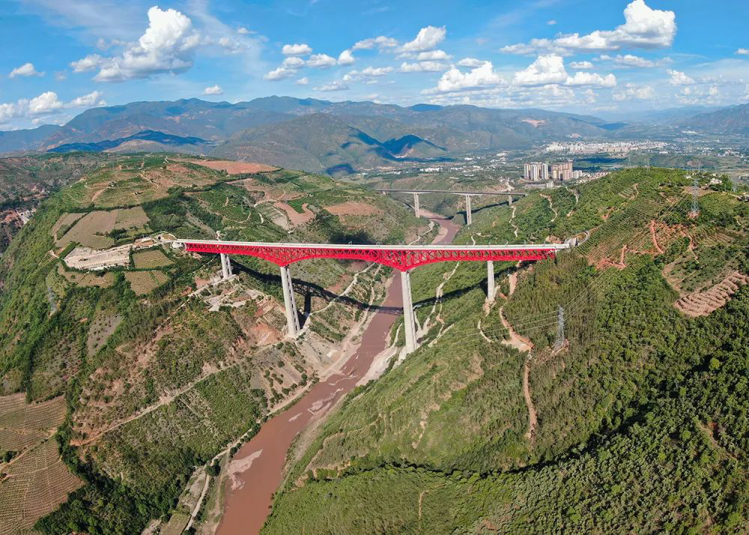
The Yuanjiang Railway Bridge
The red structure in the photo above is the sprawling Yuanjiang Railway Bridge, part of the China-Laos Railway. From this grand view, the 51.2-meter-high transmission towers look extremely small, while the hundreds-of-meters-long cross-river transmission lines seem almost invisible to the gaze.
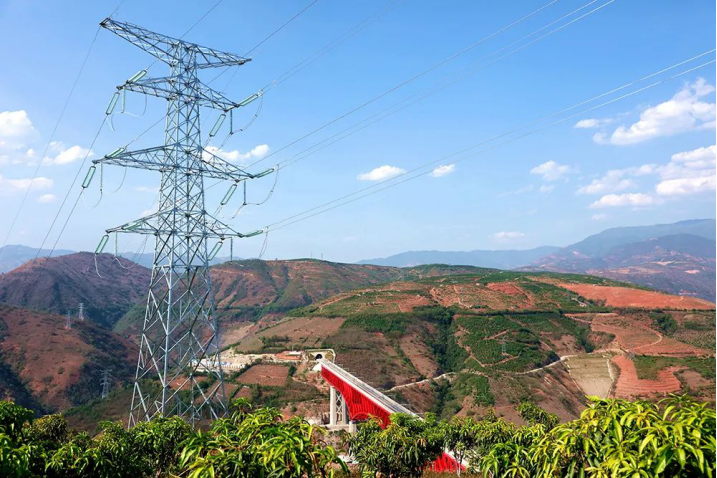
Transmission tower No. 029 of 220 kV Yuannan Traction Line
Trains on the railway are powered by China Southern Power Grid-generated electricity as they sprint across the Yuanjiang Railway Bridge, some going north to Kunming or Yuxi and still others moving south to Pu’er, Xishuangbanna, or Vientiane.
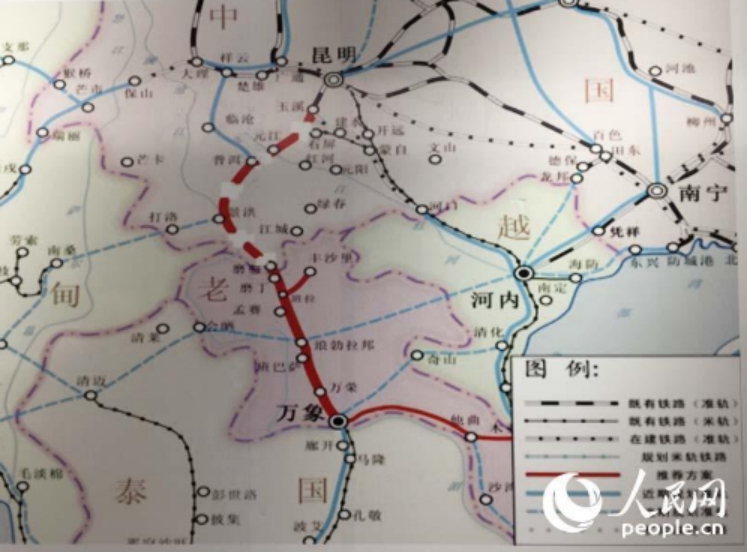
Schematic diagram of the China-Laos Railway.cr:people.cn
The more than 1,000-kilometers-long China-Laos Railway links the capital of China’s Yunnan Province, Kunming with Laos’ capital city of Vientiane, being a national First Class electrified railway.
According to the Xinhua News Agency, the railway is the “resulting synergy of China’s ‘Belt and Road Initiative’ and Laos’ strategy of turning a ‘land-locked country’ into a ‘land-linked country’”.
After opening to commercial and passenger traffic, this new train service will shorten the travel time between Kunming and Xishuangbanna to roughly three hours, and between Kunming and Vientiane to 12 hours.
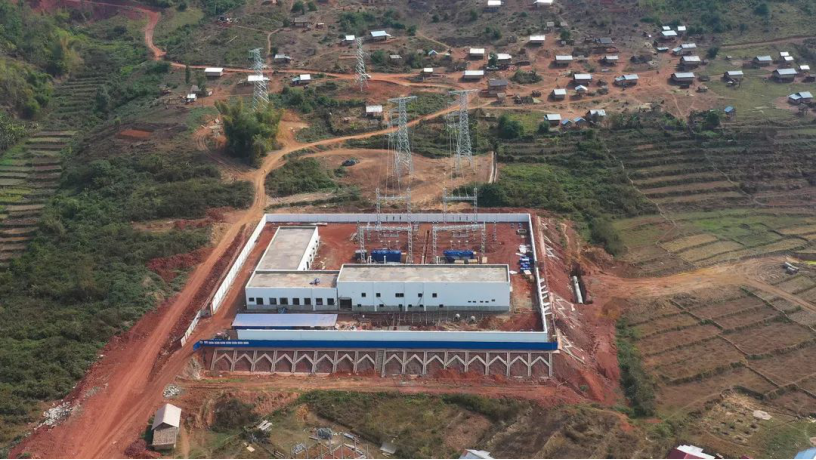
Construction site of the external power supply project for Laos section of the China-Laos railway
The external power supply project of the Lao section of the China-Laos Railway was completed (on schedule) on March 31 of this year, was invested, constructed and operated by the Laos-China Power Investment Company, a joint venture by China Southern Power Grid (CSG) and Électricité du Laos.
Électricité du Laos is the state corporation of Laos that owns and operates the country's electricity generation, electricity transmission and electricity distribution assets. EDL also manages the import and export of electricity from the national electricity grid of the country. EDL was founded in 1959 and is headquartered in Vientiane.
The external power supply project of the China section of the railway was invested and constructed by CSG Yunnan Power Grid Corporation. The power supply project passes through Yuxi, Pu’er and Xishuangbanna, with three 220kV switchyards and 1,587 transmission towers which link 679.8 kilometers of lines. It supplies dual-circuit power for 14 traction substations along the China-Laos Railway, of which the one main circuit and one standby circuit ensure safe and stable operation of the railway.
More Solutions Than Challenges
Yuanjiang, a county in Yunnan, is dominated by dry river valleys, with a blistering hot climate throughout the year. Its temperatures are often above 40 degrees from April to June, when workers are required to wear thick industrial gloves before touching transmission towers - otherwise their hands may suffer from burn blisters.
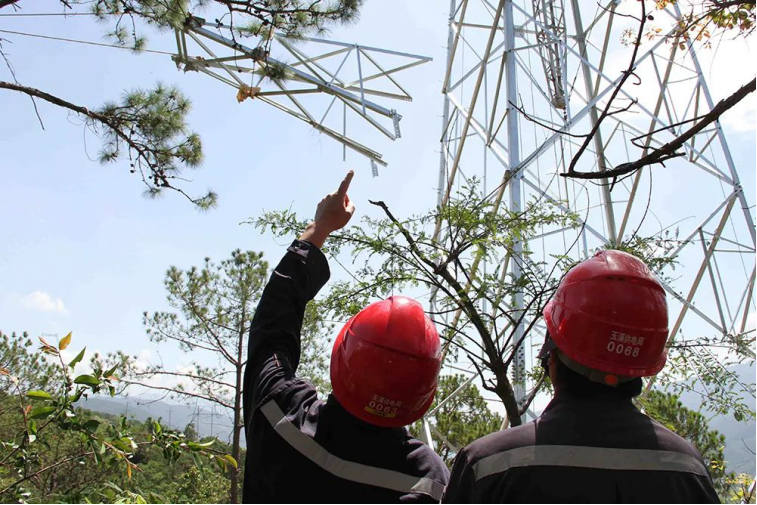
Builders assemble the transmission tower
“To ensure project progress and personnel safety, builders are required to work for no less than one hour but no more than 1.5 hours every time they are on the tower”, said Pan Zenghui, an engineer from the Planning and Construction Management Center of the CSG Yuxi Power Supply Bureau, adding that, “each of them would take two 1.5-liter bottles of water and drink them up when they come down from working for hours on an electrical tower.”
Shortly after the start of construction in December 2019, the manpower allotment for the power supply project was significantly impacted by COVID-19 and work schedules had to be suspended for several months. This temporary interruption led to missing the best weather of the year, so when the teams returned to their post-COVID assignments, they had to work under scorching high temperatures during the rainy season which lasts for half a year. These weather conditions alone brought great challenges to the senior managers of the project which had the teams stop - from time to time - and deal with varied inconveniences, including severe dehydration.
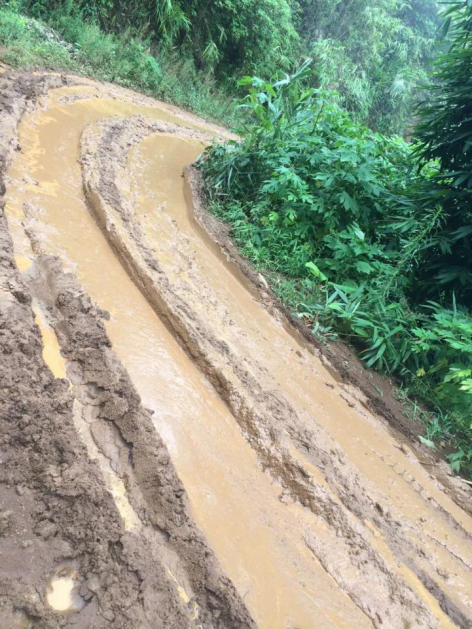
Yunnan is home to many high mountains with dense trees. Some transmission lines criss-cross around treacherous rugged mountain roads.
According to Fang Zhidong, Project Manager of Section 6 from the CSG Yunnan Power Transmission and Transformation Engineering Co., Ltd., “many times pushing a car forward with an excavator turned out to be the best case.”
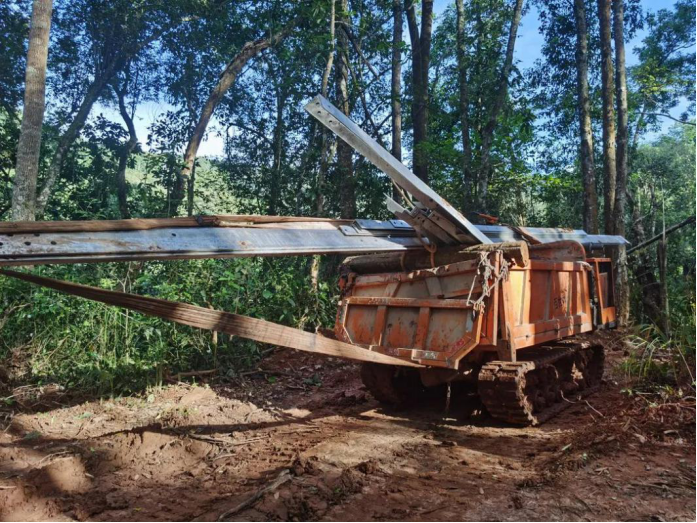
During construction, several teams needed to transport a large number of materials, including sand, cement and metal parts.
At Section 6, Fang Zhidong and his members employed “creeper” crawlers, which can transport more than two tons of materials at a time. However, the crawlers can only go back and forth twice a day along a many-times wet and slick, four- kilometer-long mountain road, which could take as long as 12 hours.
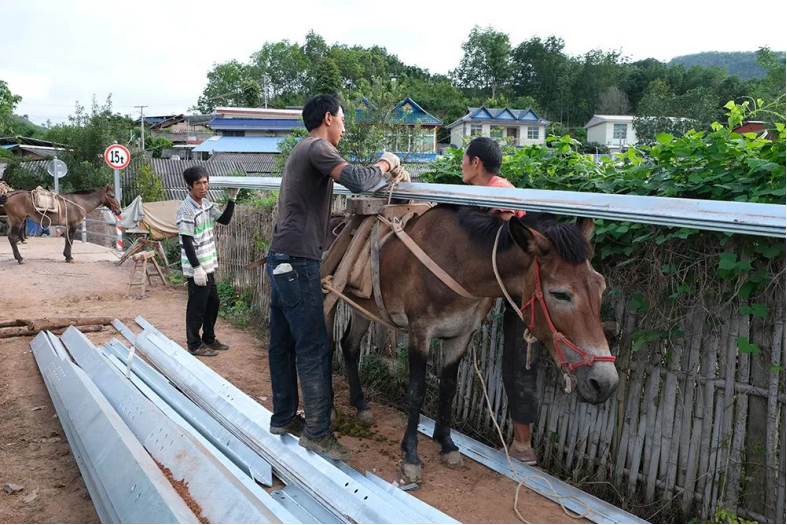
Transporting parts for a metal tower via “horse power”
In many places without even the basic mountain roads, the teams had to rely on mules, horses and the sheer grit of human “power” to move metal and machinery.
At the Nanxi Traction Substation in the Yuxi Section, even mules and horses proved inaccessible. Therefore, dozens of men had to carry the materials for two transmission towers by themselves for well over one hundred meters. Building materials for building towers alone weigh about 2.92 tons.
Geographic Advantages/Tailored Measures to Suit Local Conditions While Improving the Power Grid
The power supply project has severely tested not only builders’ physical strength but also their wisdom and vision.
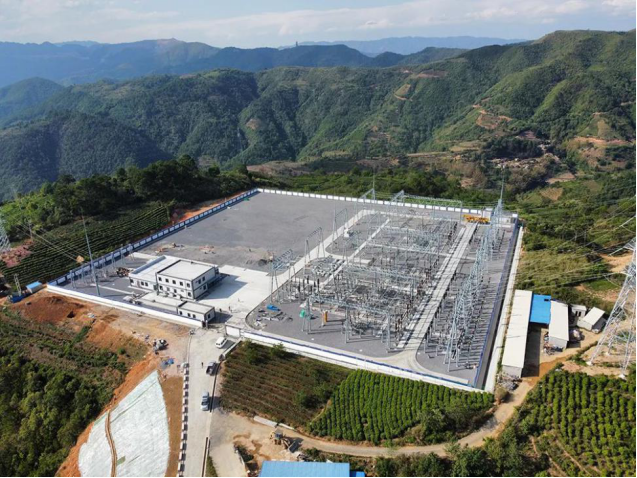
Guineng Switchyard
As the above picture illustrates, on the right side are various switchgears, while the left side is reserved for substation equipment.
During the launch of construction, China Southern Power Grid senior managers realized this massive new power supply project would not only meet the needs of railway power supply but also take into consideration local economy and people’s livelihood.
Therefore, “our transmission lines and switchyards are designed to meet Pu’er’s power demand for the next ten years. It is Guineng Switchyard now, but the Phase II construction is about to begin.
Upon its completion, it will become 220kV Guineng Substation”, said Chen Ke from the Planning and Construction Management Center of the CSG Pu’er Power Supply Bureau. It is the consensus of engineers and managers from the power supply bureaus of Yuxi, Pu’er and Xishuangbanna to integrate power facilities for the China-Laos Railway into the greater power grid of Yunnan Province.
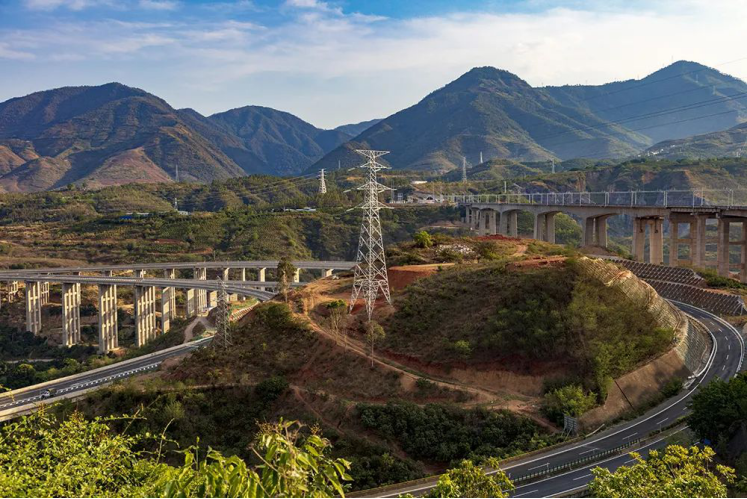
Power lines across roads and railways connect to the Nanxi River Traction Substation.
The new railway requires a consistent primary power supply, with extremely high requirements for power reliability. According to He Wei, an engineer from the CSG Yuxi Power Supply Bureau, dual power supplies have been adopted for use with this railway. One source is connected from the 220kV Yuanjiang Substation into Nanxihe Traction Substation, while the other is connected from the 220kV Guineng Switchyard into Nanxihe Traction Substation. On this basis, a double-split conductor line has been added between the Yuanjiang Substation and Guineng Switchyard, which creates a “looped network” from Yuxi to Pu’er, which calls for a greater stability of the power grid.
Working Together for Maximum Impact
Staff and engineers from China Southern Power Grid have exhausted their energy and racked their brains to advance this power supply project. But if you ask what is the most difficult in this process? The answer would be “coordination”.
Reliable power supplies for the railway is an infrastructure of public interest. However, its construction involves interests of multiple sides such as railway, forestry, government and the general public. Therefore, it is essential for builders to make plans in a forward-looking manner and balance various relationships.
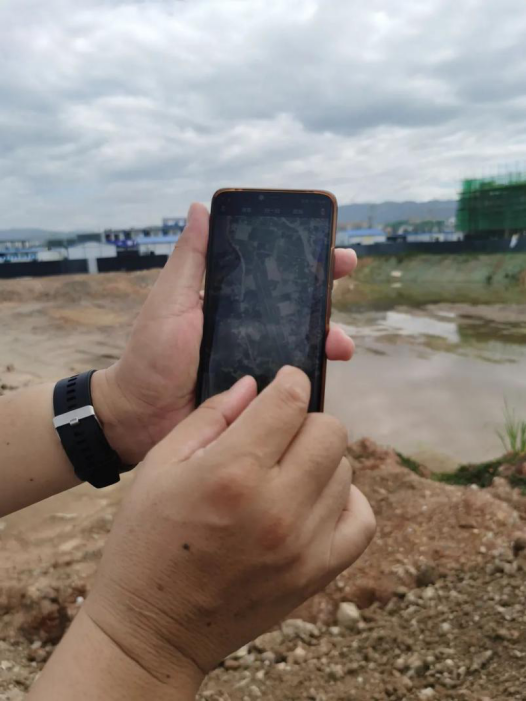
The original location of Gasa Traction Substation is within easy reach of Gasa’s railway station and international airport on the map.
On June 19, reporters visited the Xishuangbanna Station of the China-Laos Railway and could clearly see aircraft taking off and landing at nearby Xishuangbanna Gasa International Airport which serves Jinghong, Xishuangbanna Dai Autonomous Prefecture in Yunnan. Zhao Tibin, Deputy Director of the CSG Xishuangbanna Power Supply Bureau pointed to a large pothole and told reporters it is the original address of Gasa Traction Substation of the railway.
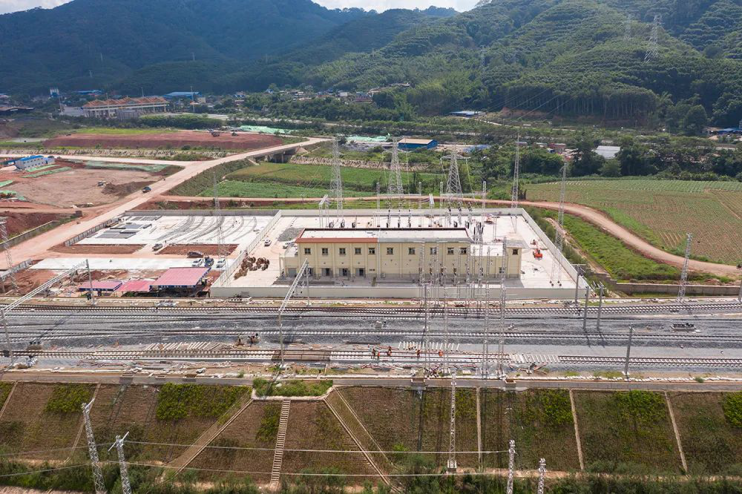
The building is Mohan Traction Substation whose left is Mohan Station of the railway.
The traction substation functions as a “transit station”. It converts 220kV AC power into 27500V power and connects the power to catenary to supply power for the train. It is an excellent choice to not only build a traction substation around the railway station but to locate it near the airport to assist local power supply bureaus.
To locate the Gasa Traction Substation located near Xishuangbanna Gasa International Airport means some transmission lines will have to pass through restricted areas. CSG engineers then had to deal with aviation audits in addition to standard formalities, which would cause delays to the project and increase subsequent costs.
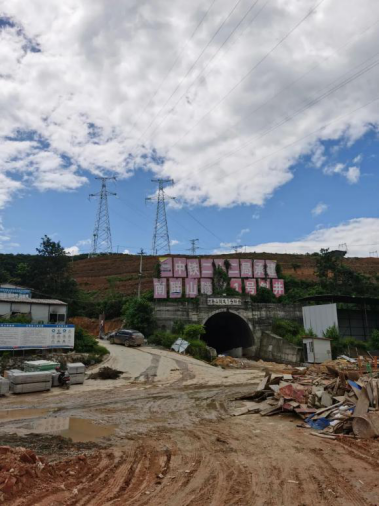
This is shaft of Nanlianshan Tunnel. Transmission lines are connected to Gasa Traction Substation from above the shaft and then to power supply network for the China-Laos Railway.
Zhao Tibin knows that Xishuangbanna Power Supply Bureau must propose a better alternative since it was thought the original location was inappropriate. The original location has Xishuangbanna Gasa International Airport to the west, the Lancang River to the north and prosperous urban areas to the east. So, Mr. Zhao had to find appropriate venues to the south.
He visited many places and finally found a suitable open space outside the inclined shaft of the Nanlianshan Tunnel which would meet the technical requirements for the railway power supplies, but it also meant the railway department would be required to move the traction substation some 10 kilometers south and increase its overall financial investment by millions of CNY.
Next was to persuade the railway department of this needed venue relocation. Mr. Zhao visited relevant personnel no less than 10 times for discussion and coordination. Finally, the railway department accepted the proposal of the Xishuangbanna Power Supply Bureau to change the location.
“Relevant personnel of the CSG Xishuangbanna Power Supply Bureau proactively communicated with us and coordinated and confirmed with aviation evaluating organs, civil aviation administrations as well a senior managers of Xishuangbanna Gasa International Airport many times throughout the feasibility study, preliminary establishment and installation stages to ensure the smooth progress of aviation evaluation,” said Lei Kai, an engineer at the South Yunnan Headquarters of the Kunming Bureau of the China State Railway Group.
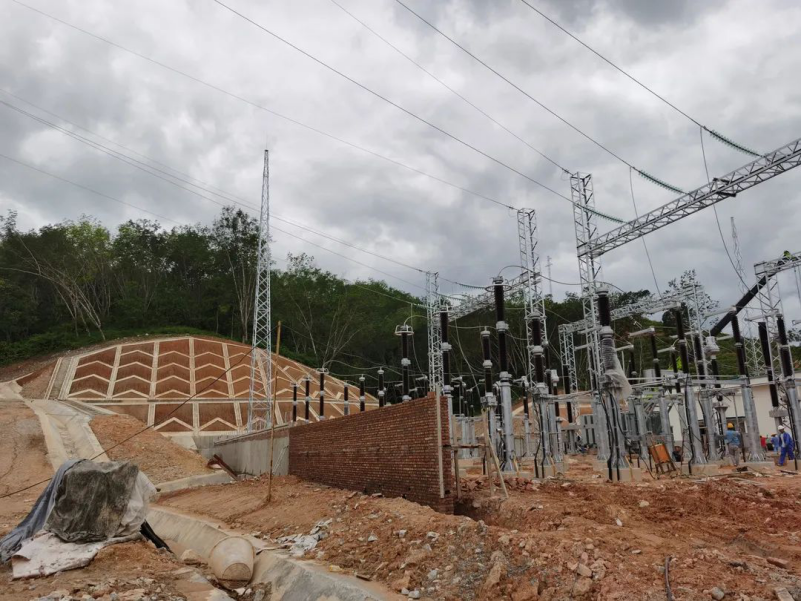
Gasa Traction Substation under construction
From continuous efforts of many months, the construction phase of the Gasa Traction Substation is now coming to a conclusion with external power facilities such as overhead lines and iron towers already in place.
Mr. Zhao concluded, “This is not a question of right or wrong. We must weigh safety, reliability, cost-effectiveness, and feasibility, Had we didn’t make a sound plan, there could be many troubles in later stages. Perhaps it seems not encouraging enough but this is how the best projects are built. Those seemingly common things are actually remarkable.”
Tel:+86-25-84152563
Fax:+86-25-52146294
Email:export@hbtianrui.com
Address:Head Office: No.8 Chuangye Avenue, Economic Development Zone, Tianmen City, Hubei Province, China (Zip Code: 431700) Nanjing Office: Room 201-301, Building K10,15 Wanshou Road,Nanjing Area, China (Jiangsu) Pilot Free Trade Zone,Jiangsu Province,China (Zip Code:211899)
